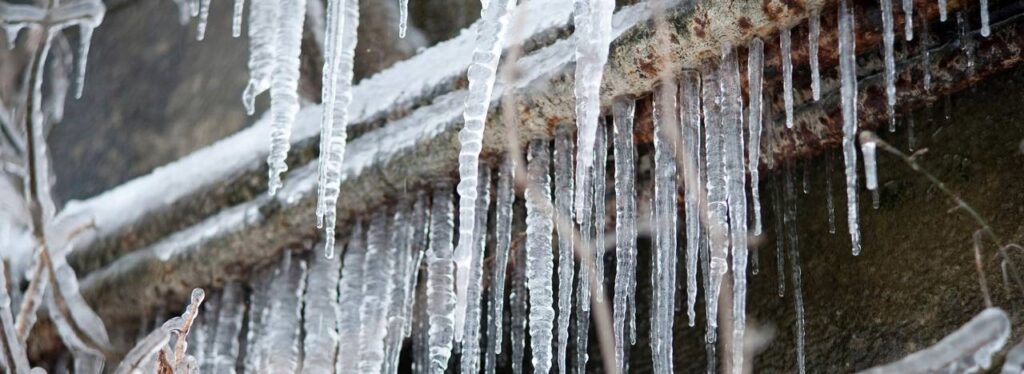Ways to Defend Your Pipes from Cold Weather: Expert Advice
Ways to Defend Your Pipes from Cold Weather: Expert Advice
Blog Article
What are your opinions on Winter Plumbing Precautions: Preventing Frozen Pipes?
.jpg)
Cold weather can damage your plumbing, especially by freezing pipelines. Right here's exactly how to avoid it from occurring and what to do if it does.
Intro
As temperature levels decrease, the risk of frozen pipelines boosts, potentially resulting in costly fixings and water damage. Understanding just how to avoid frozen pipelines is critical for home owners in cold climates.
Recognizing Frozen Pipelines
What creates pipelines to freeze?
Pipelines freeze when revealed to temperatures below 32 ° F (0 ° C) for prolonged durations. As water inside the pipelines freezes, it expands, taxing the pipeline walls and possibly triggering them to burst.
Threats and problems
Frozen pipes can bring about water disturbances, building damage, and expensive fixings. Burst pipelines can flooding homes and cause substantial architectural damages.
Indicators of Frozen Piping
Identifying icy pipelines early can stop them from breaking.
Just how to recognize icy pipelines
Try to find reduced water flow from faucets, unusual smells or sounds from pipelines, and visible frost on exposed pipelines.
Avoidance Tips
Protecting susceptible pipes
Cover pipelines in insulation sleeves or utilize heat tape to secure them from freezing temperature levels. Focus on pipes in unheated or outside areas of the home.
Heating methods
Keep interior spaces effectively warmed, particularly areas with plumbing. Open closet doors to enable warm air to flow around pipes under sinks.
Shielding Outside Pipes
Yard hoses and outside taps
Separate and drain garden hose pipes before winter. Mount frost-proof faucets or cover outside faucets with shielded caps.
What to Do If Your Pipes Freeze
Immediate actions to take
If you presume icy pipelines, keep faucets available to eliminate stress as the ice melts. Use a hairdryer or towels taken in warm water to thaw pipelines slowly.
Long-Term Solutions
Structural changes
Consider rerouting pipes far from exterior walls or unheated areas. Add additional insulation to attics, basements, and crawl spaces.
Upgrading insulation
Invest in premium insulation for pipes, attic rooms, and walls. Correct insulation assists maintain regular temperatures and reduces the danger of frozen pipelines.
Conclusion
Protecting against frozen pipelines requires positive actions and quick feedbacks. By understanding the reasons, indicators, and preventive measures, house owners can shield their plumbing during winter.
5 Ways to Prevent Frozen Pipes
Drain Outdoor Faucets and Disconnect Hoses
First, close the shut-off valve that controls the flow of water in the pipe to your outdoor faucet. Then, head outside to disconnect and drain your hose and open the outdoor faucet to allow the water to completely drain out of the line. Turn off the faucet when done. Finally, head back to the shut-off valve and drain the remaining water inside the pipe into a bucket or container. Additionally, if you have a home irrigation system, you should consider hiring an expert to clear the system of water each year.
Insulate Pipes
One of the best and most cost-effective methods for preventing frozen water pipes is to wrap your pipes with insulation. This is especially important for areas in your home that aren’t exposed to heat, such as an attic. We suggest using foam sleeves, which can typically be found at your local hardware store.
Keep Heat Running at 65
Your pipes are located inside your walls, and the temperature there is much colder than the rest of the house. To prevent your pipes from freezing, The Insurance Information Institute suggests that you keep your home heated to at least 65 degrees, even when traveling. You may want to invest in smart devices that can keep an eye on the temperature in your home while you’re away.
Leave Water Dripping
Moving water — even a small trickle — can prevent ice from forming inside your pipes. When freezing temps are imminent, start a drip of water from all faucets that serve exposed pipes. Leaving a few faucets running will also help relieve pressure inside the pipes and help prevent a rupture if the water inside freezes.
Open Cupboard Doors
Warm your kitchen and bathroom pipes by opening cupboards and vanities. You should also leave your interior doors ajar to help warm air circulate evenly throughout your home.

Do you really like reading about How To Avoid Freezing Pipes? Try leaving a comment down the page. We would be happy to listen to your reactions about this entry. We are looking forward that you come back again later on. Are you aware of another individual who is interested in the subject? Feel free to share it. Thank-you for going through it.
Services Report this page